SEO vs PPC: Digital Marketing Strategies
Digital marketing thrives on driving targeted traffic to websites, and two strategies stand at the forefront: SEO (Search Engine Optimization) and PPC (Pay-Per-Click). While both aim at bolstering your online presence, they differ significantly in approach and outcome.
Key Takeaways
- Understanding the distinct nature of SEO and PPC is crucial for effective digital marketing.
- Each strategy has unique pros and cons, impacting their suitability for different business scenarios.
Table of Contents
- Understanding SEO and PPC
- Pros and Cons of SEO and PPC
- When to Use Each Strategy
- Combining SEO and PPC for Maximum Effectiveness
- Effectiveness Comparison Between SEO and PPC
- Frequently Asked Questions
- Additional Resources
Understanding SEO and PPC
What is SEO?
SEO – a beacon of organic web traffic, leverages methods to improve website visibility in search engine results. This long-term strategy encompasses:
- Keyword Research: Uncovering what your audience searches for.
- On-page SEO: Crafting content that resonates with these searches.
- Off-page SEO: Building credibility through external links.
- Technical SEO: Ensuring search engines can index your site effectively.
What is PPC?
Contrasting SEO, PPC stands for immediate, paid visibility in search results. Essential elements include:
- Keyword Research: Identifying target terms for your ads.
- Bid Setting: Deciding your spend for clicks.
- Ad Creation: Designing compelling advertisements.
- Audience Targeting: Pinpointing who sees your ads.
SEO vs PPC: Key Differences
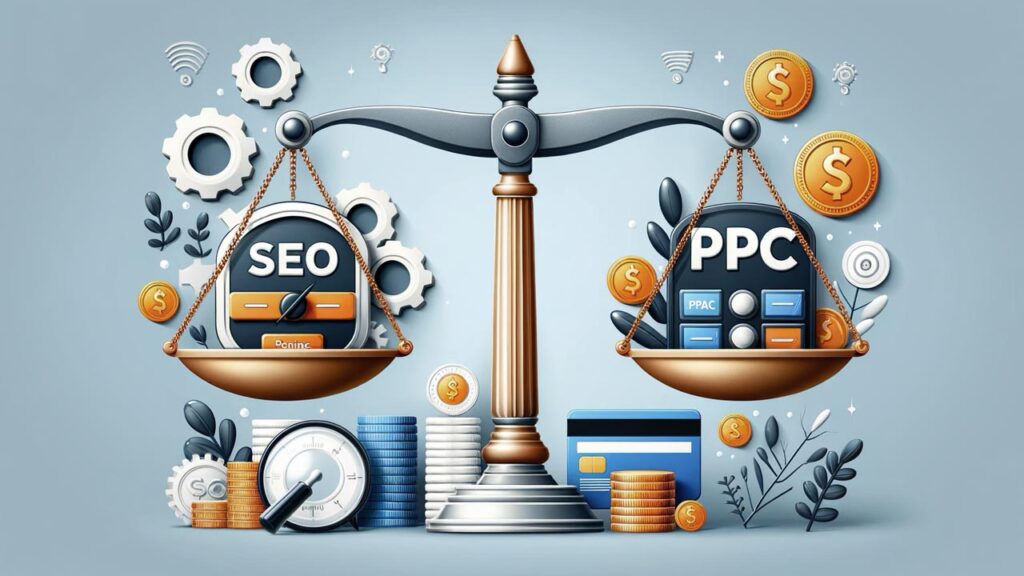
While SEO focuses on organic growth, PPC champions paid visibility. SEO offers sustained traffic without per-click costs, demanding time and expertise. PPC, in contrast, promises immediate results at a direct cost but lacks long-term traffic sustainability without ongoing investment. Visit What is SEO (Search Engine Optimization)? for more insights and What is PPC (Pay-Per-Click)?.
Matt Diggity offers a great explanation in the following video:
Pros and Cons of SEO and PPC
Pros and Cons of SEO
Pros
- Cost-Effectiveness: In the long run, SEO can be more economical as it doesn’t involve paying for each click.
- Sustainable Traffic: SEO efforts lead to consistent traffic over time, even with limited or no PPC budgets.
- Credibility and Trust: Higher organic rankings enhance your brand’s trustworthiness in the eyes of your audience.
Cons
- Time-Consuming: Unlike PPC, SEO results don’t happen overnight. It usually takes months to see significant outcomes.
- Competitive Landscape: Climbing up the ranks in SEO can be challenging due to intense competition.
- Continuous Effort: Maintaining and improving SEO rankings requires ongoing effort and adaptation to search engine algorithm updates.
Pros and Cons of PPC
Pros
- Immediate Results: PPC campaigns can be set up swiftly, offering quick visibility and traffic.
- Targeted Reach: PPC allows for precise targeting based on demographics, interests, and more.
- Testing and Optimization: Rapid feedback from PPC campaigns aids in effective A/B testing and immediate optimization efforts.
Cons
- Higher Costs: PPC can be expensive, especially in competitive industries, as you pay for each click.
- Short-Lived Impact: The effects of PPC are limited to the campaign duration. Once you stop paying, the traffic halts.
- Ad Fatigue: Over time, the effectiveness of PPC ads may diminish due to ad fatigue and audience desensitization.
PPC and SEO each have their unique advantages and challenges, making them suitable for different marketing objectives. Understanding these can help you make informed decisions about where to allocate your marketing resources.
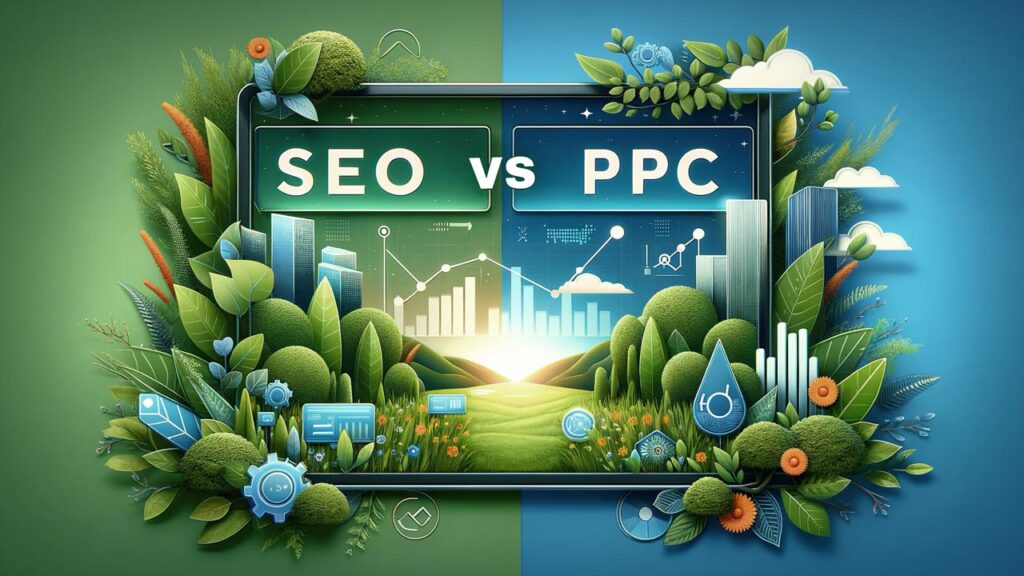
When to Use Each Strategy
When to Prioritize SEO
- For Long-term Brand Building: Invest in SEO to establish and reinforce your brand over time.
- In Competitive Markets for Organic Reach: SEO can provide a more cost-effective way to compete for visibility.
- For Continuous Web Traffic: SEO helps maintain a steady stream of traffic without the ongoing costs associated with PPC.
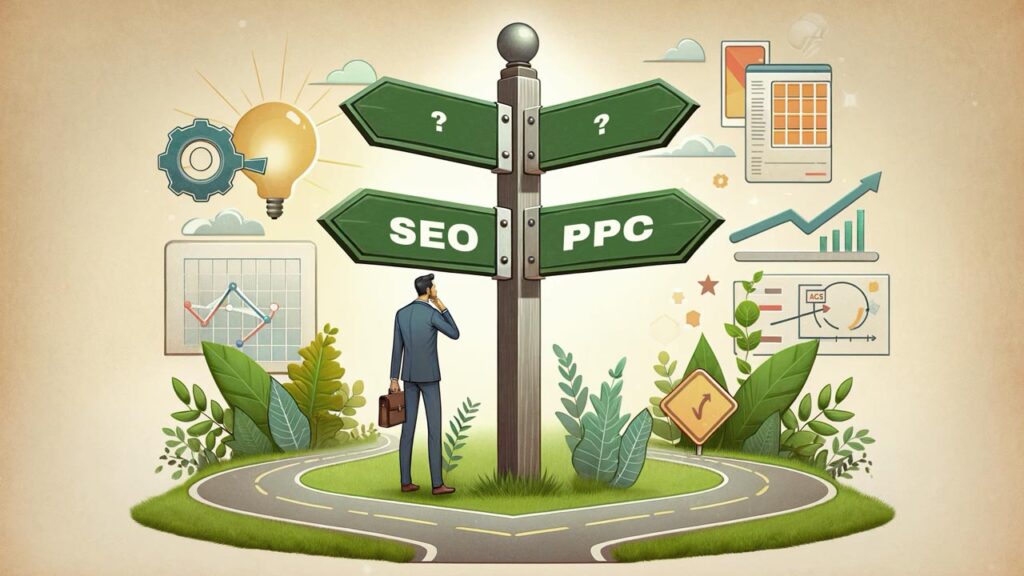
When to Opt for PPC
- For Quick Results and Launches: Use PPC to gain immediate visibility for new products or services.
- Targeting Specific Audiences: PPC’s advanced targeting capabilities make it ideal for reaching particular customer segments.
- For Short-Term Campaigns: PPC is well-suited for promotions or sales events with a specific timeframe.
Combining SEO and PPC for Maximum Effectiveness
Integrating SEO and PPC strategies can lead to a comprehensive digital marketing approach. Here’s how they can complement each other:
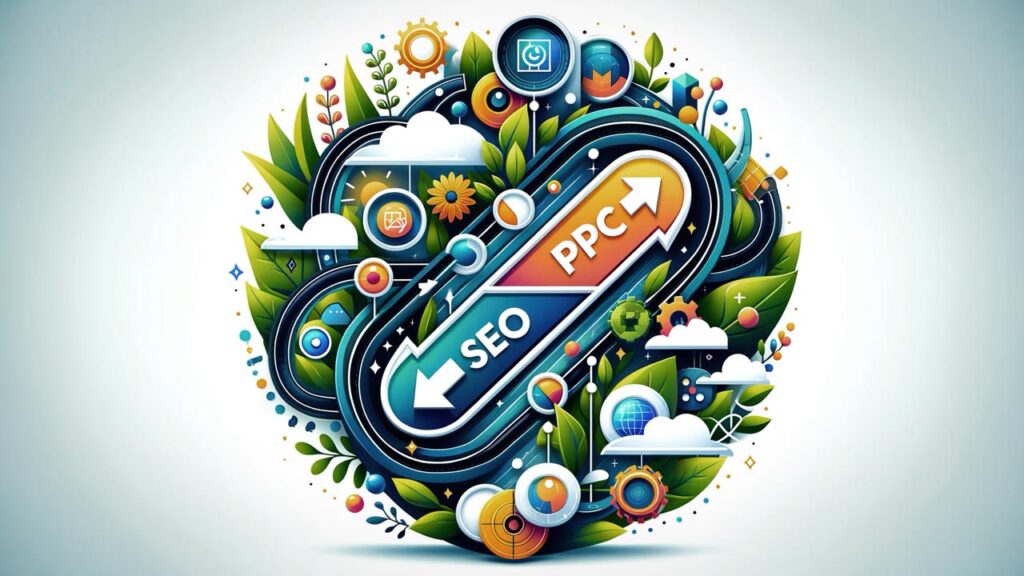
- Data Sharing: Utilize insights from PPC campaigns to inform and enhance your SEO strategy.
- Content Promotion: Use PPC to drive traffic to high-quality SEO content for immediate visibility.
- A/B Testing: Apply learnings from PPC ad and landing page testing to optimize your overall web presence.
Employing both SEO and PPC not only maximizes your reach across the digital landscape but also leverages the strengths of each to support and amplify the other.
Effectiveness Comparison Between SEO and PPC
| Factor | SEO (Search Engine Optimization) | PPC (Pay-Per-Click) |
|---|---|---|
| Cost | Generally lower long-term cost; no cost per click. | Can be costly; involves cost per click. |
| Time for Results | Long-term; can take months to see significant impact. | Immediate; visible as soon as the campaign starts. |
| Traffic Potential | Sustainable and continuous if rankings are maintained. | Directly tied to the campaign duration and budget. |
| Targeting | Targets through content relevance and keywords. | Allows precise targeting by demographics, interests, etc. |
| Credibility/Trust | Often perceived as more trustworthy by users. | Can be seen as less credible than organic results. |
| ROI Measurement | More challenging to measure direct ROI. | Easier to measure ROI with direct campaign data. |
| Flexibility | Requires ongoing optimization; less immediate control. | High control over campaign adjustments. |
| Maintenance | Requires continuous effort in content, links, etc. | Demands regular monitoring and adjustment. |
| Long-term Impact | Builds authority and lasting web presence. | Impact lasts as long as the campaign is active. |
| User Experience | Focuses on improving overall site experience. | Primarily focused on ad optimization. |
Comparative analysis of SEO and PPC effectiveness across various industries:
Organic Search Traffic Statistics (SEO)
- Organic search accounts for 53.3% of web traffic.
- Organic results are clicked on by 70% of users, compared to 30% for paid search results.
- SEO is often seen as more trustworthy than paid search.
- Organic search is not a quick fix, but offers long-term benefits.
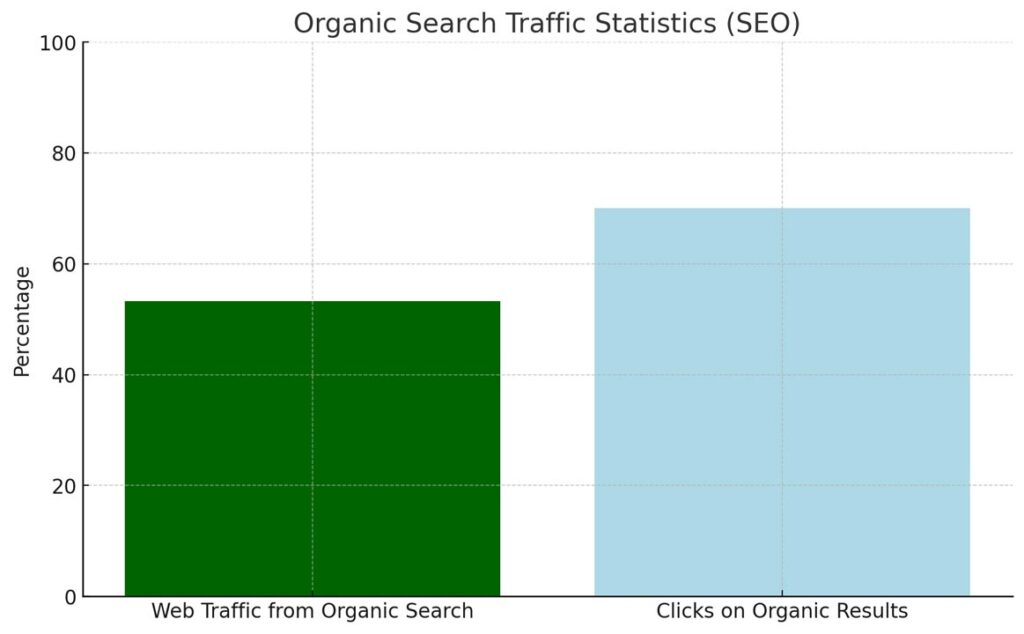
Here is the combined bar chart that compares the conversion rates and ROI for organic search versus PPC. In this chart:
- The blue bars represent the conversion rates, with organic search having a 14.6% conversion rate and PPC a 10% conversion rate.
- The green bars show the ROI, represented as a ratio. For PPC, the ROI is $2 for every $1 spent (a 2:1 ratio), while for organic search, I’ve used a baseline of 1:1 for comparison purposes.
This visualization helps to understand how the two channels differ in terms of conversion efficiency and return on investment.
Paid Search Traffic Statistics (PPC)
- Paid search can increase website traffic by 53%.
- 75% of users say paid search ads make it easier to find the information they need.
- Paid search can be a valuable tool for targeting specific audiences.
- It can be expensive, especially for highly competitive keywords.
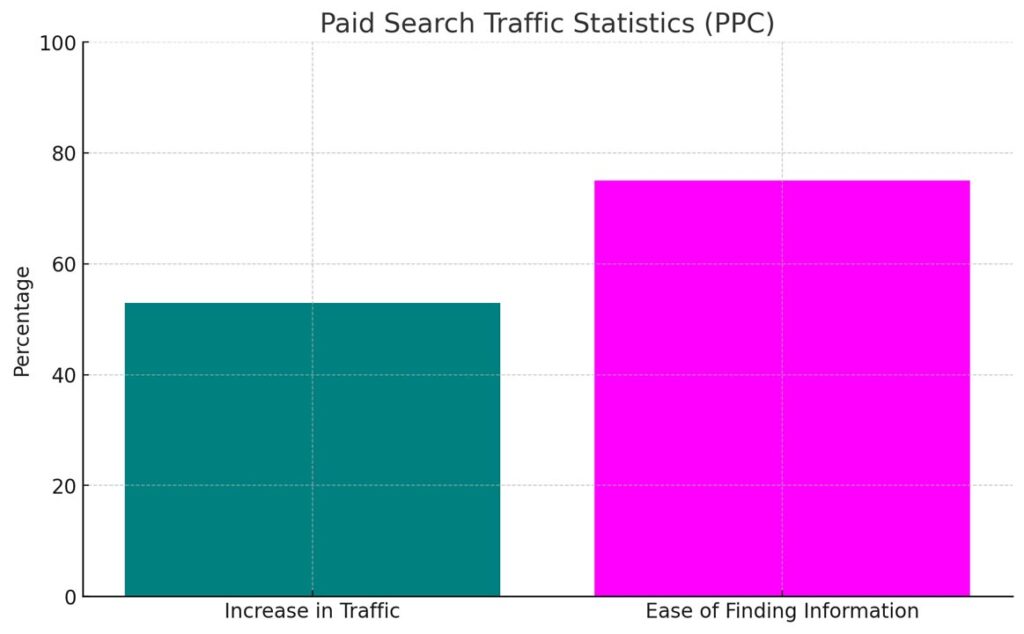
Here’s the bar chart for the Paid Search Traffic Statistics (PPC). The chart illustrates two key points:
- Increase in Traffic: Paid search can increase website traffic by 53%.
- Ease of Finding Information: 75% of users report that paid search ads make it easier to find the information they need.
This visualization provides a clear comparison of the impact of paid search on website traffic and user experience.
Conversion Rates and ROI
- Organic search has a 14.6% conversion rate, while PPC has a 10% conversion rate.
- PPC typically has a better ROI, averaging $2 for every $1 spent, varying by industry.
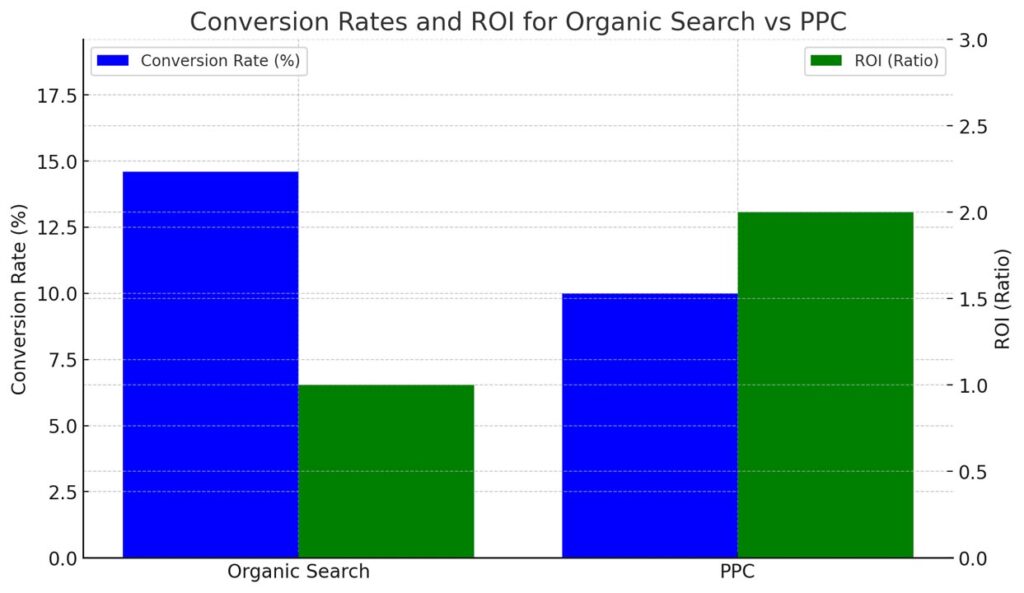
Here is the combined bar chart that compares the conversion rates and ROI for organic search versus PPC. In this chart:
- The blue bars represent the conversion rates, with organic search having a 14.6% conversion rate and PPC a 10% conversion rate.
- The green bars show the ROI, represented as a ratio. For PPC, the ROI is $2 for every $1 spent (a 2:1 ratio), while for organic search, I’ve used a baseline of 1:1 for comparison purposes.
This visualization helps to understand how the two channels differ in terms of conversion efficiency and return on investment.
SEO vs. PPC Conversion Rates by Industry
- Average SEO conversion rates and PPC conversion rates differ significantly across industries. For example, in Legal Services, SEO converts at 7.5% while PPC is at 2.2%.
- Financial Services see a larger gap, with SEO converting at 2.2% and PPC at a mere 0.3%.
- In contrast, Higher Education & College sees PPC outperforming SEO with 1.7% vs 1.4% conversion rates respectively.
General Statistics
- 53% of website traffic comes from organic search, while only 27% comes from paid search.
- 70% to 80% of users totally ignore paid ads.
- About 26% of US internet users use ad blockers.
- 74% of brands say PPC ads are a big part of their business.
- 65% of people who see PPC ads click on them.
- Paid advertising has a 200% ROI.
- The average small to medium-sized businesses (SMBs) spend 7 times more on PPC than SEO.
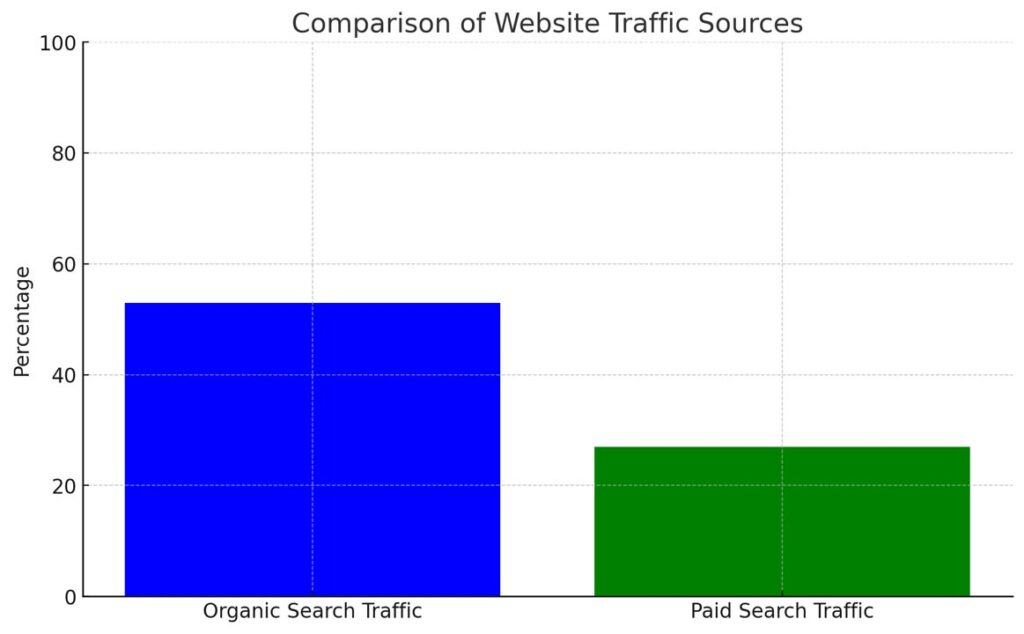
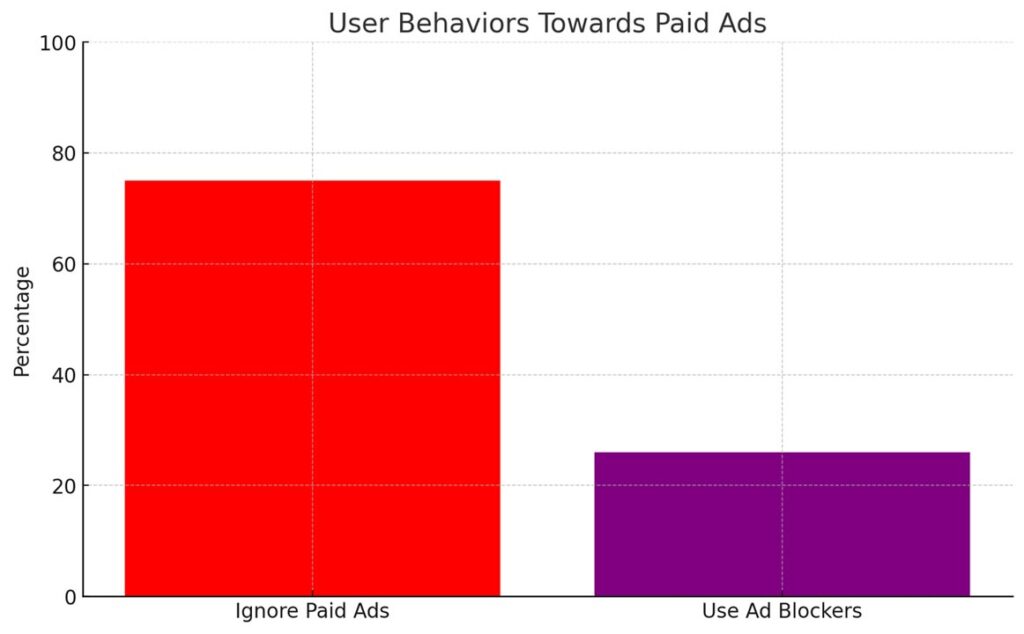
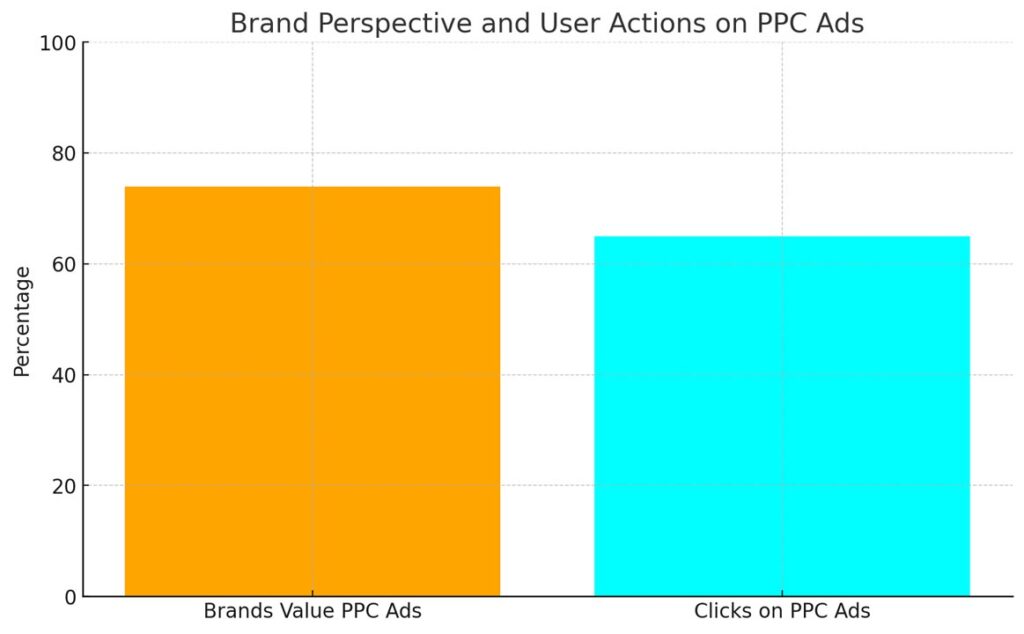
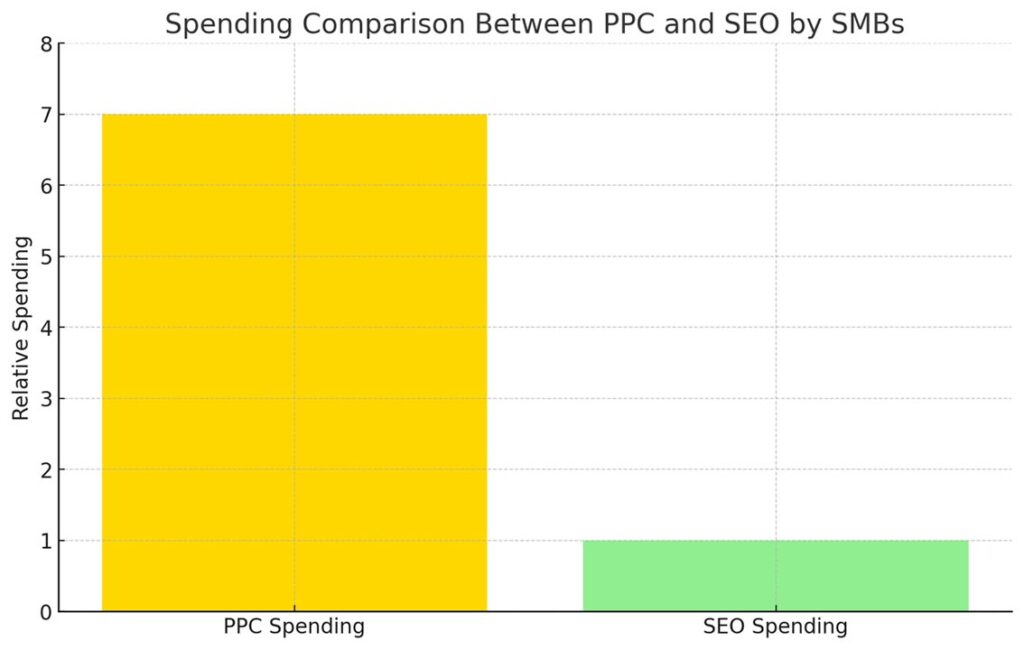
These statistics provide a comprehensive view of the effectiveness of SEO and PPC across different industries. They highlight the varying impacts of each approach, with SEO generally leading in traffic and conversion rates but PPC showing higher immediacy and ROI, especially in certain industries. The choice between SEO and PPC should be informed by specific business goals, industry context, and target audience.



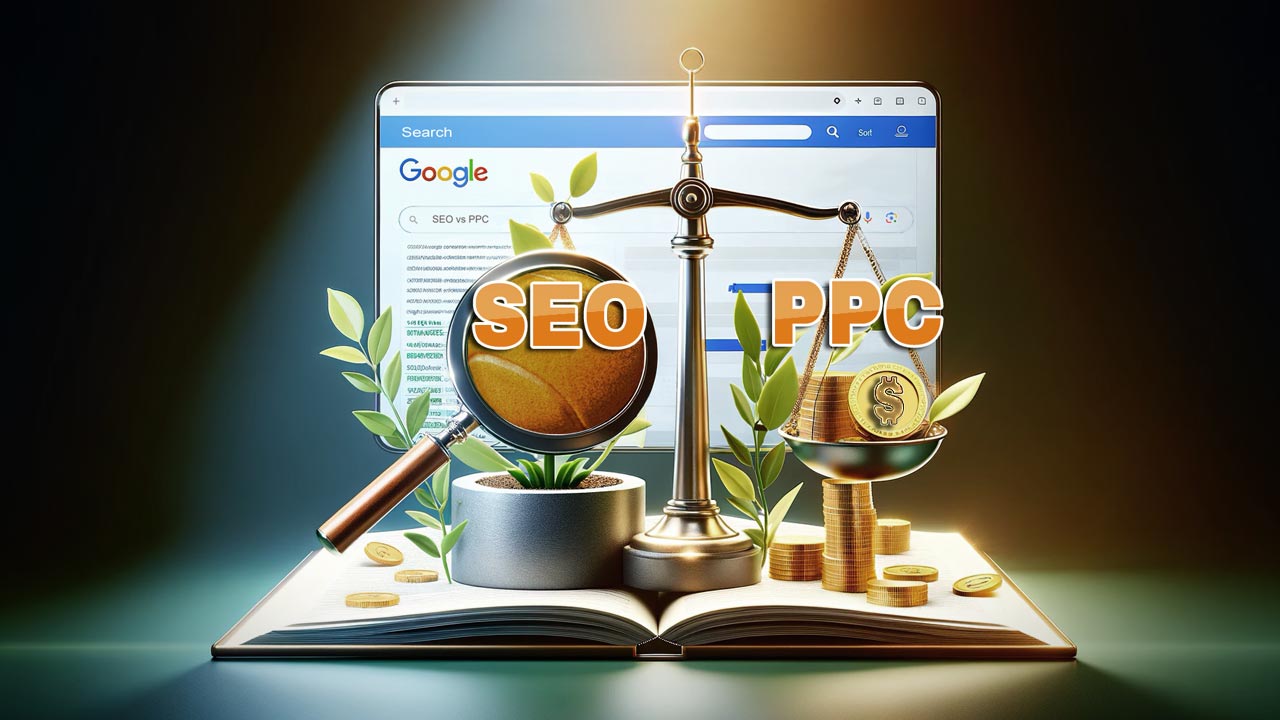

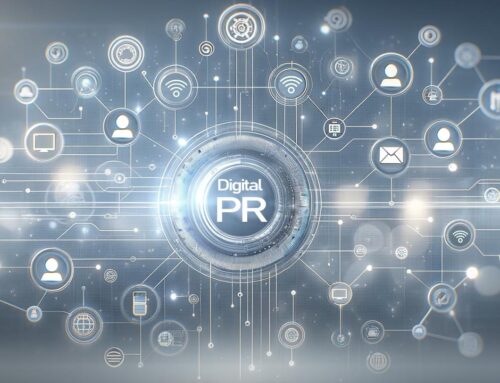





Leave A Comment